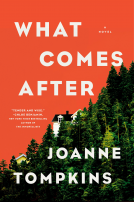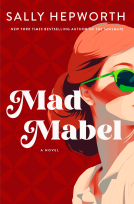
The Snake Pit
by Mary Jane Ward
This title was previously available on NetGalley and is now archived.
Send NetGalley books directly to your Kindle or Kindle app
1
To read on a Kindle or Kindle app, please add kindle@netgalley.com as an approved email address to receive files in your Amazon account. Click here for step-by-step instructions.
2
Also find your Kindle email address within your Amazon account, and enter it here.
Pub Date Jun 01 2021 | Archive Date Aug 31 2021
Talking about this book? Use #TheSnakePit #NetGalley. More hashtag tips!
Description
Do you hear voices? Virginia Stuart Cunningham, a journalist and novelist with a wicked sense of humor, is sitting on a park bench waiting for her husband when an intrusive stranger begins to pester her with nonsensical questions. Is he mad? Or is she? So begins this brilliant literary exploration of mental illness, a novel that asks us to reconsider what counts as sanity in a crazy world.
Suffering a breakdown in 1941, thirty-five-year-old novelist Mary Jane Ward was diagnosed, or perhaps misdiagnosed, with schizophrenia and committed to a psychiatric hospital in upstate New York. From that horrific experience came this gripping story.
Inspiration for the 1948 film starring Olivia de Havilland, The Snake Pit sparked important investigative journalism and state legislation to reform the care and treatment of people with mental illness. It belongs in the company of Sylvia Plath’s The Bell Jar and Ken Kesey’s One Flew Over the Cuckoo’s Nest—two books it influenced.
This authoritative Library of America edition includes an afterword by Ward’s cousin, Larry Lockridge, and a Reading Group Guide featuring additional material about Ward and the real-life roots of the novel.
Available Editions
| EDITION | Other Format |
| ISBN | 9781598536805 |
| PRICE | $15.95 (USD) |
| PAGES | 360 |
Average rating from 22 members
Featured Reviews
What a bizarre book. Written 75 years ago, this semi-autobiographical story is hard to rate. It's difficult to read, but once you know where the main character is, it kind of makes sense, and yet it doesn't. The narrator flips between first, second, and third person constantly, which kept me, as the reader, completely off-balance. Having never seen the movie that is loosely based on this novel, I had no idea what I was getting into. The Afterword brings more clarity and, having read it, made me want to reread the novel in a new light. I think this is an important work on mental health and can see why it is a classic being re-released by the Library of America.
 Donna S, Reviewer
Donna S, Reviewer
I remembered the movie from when I was a very young child. I watched it on TV a few years after it was released in theaters. I remember only that I was fascinated by something like a woman either in, or looking into a deep well, with other people or voices spinning around her. I may have that memory all mixed up; it was at least 60 years ago. But I never realized that The Snake Pit was also a book, and a semi-autobiographical one, at that. When I saw it offered on NetGalley, I seized the chance to read it.
The book was fascinating to me. The first few pages were a bit confusing, as I tried to understand what was happening. But within a short while, I realized that the main character was describing exactly what she was seeing in her own mind. Within a short time, I began to understand how the story was written, and I was drawn into it, and into her world in a New York psychiatric hospital in the 1940's.
A somewhat disturbing, but highly interesting story and I thank NetGalley for the opportunity to read and shed light on a story that has fascinated me since before I could even understand it. Kudos to author Mary Jane Ward for writing about her experiences.
Originally published in 1946, Mary Jane Ward takes us on a semi-autobiographical journey into the mind of a young woman suffering from a mental breakdown, and her subsequent stay in a mental hospital. Some may think the writing is a bit disjointed, but I thought it was an intriguing look into the reality of mental illness, as well as a glimpse into some of the antiquated practices now considered barbaric.
 Reviewer 328937
Reviewer 328937
This is the 75th anniversary edition of The Snake Pit, originally published in 1946. The book is a semi-autobiographical novel based on the author's committal to New York's Rockland State Hospital in 1941. This update also includes an Afterword that discusses the 1948 movie 'The Snake Pit', starring Olivia de Haviland.
*****
Virginia Cunningham finds herself sitting in a park, confused and hearing voices. Sitting beside her is an attractive girl in a hoover apron, which Virginia considers inappropriate attire for leaving the house. Moreover, Virginia is dismayed by her own dress, thinking she shouldn't be wearing this old rag because "you cannot go out on New York streets looking any old way."
Virginia blames the warmth of the sun for the confused thoughts and memories that meander through her head. She does know she's a novelist, and feels she should befriend 'hoover girl' who seems down on her luck.
Then Virginia's reflections are interrupted by a shrill voice saying, "All right. ladies." Hoover girl - whose name is Grace - springs up, pulls Virginia along, and hurries her to a line of women heading into a building. Virginia asks where they're going but Grace admonishes Virginia not to speak, because talking isn't allowed.
Virginia speculates she's in a zoo, because of the smell and odd-looking residents. When Virginia doesn't see cages, she decides it's not a zoo but an institution she's researching for her next novel - either a training school for underprivileged and delinquent girls or a prison.
Afterwards, going to the community washroom with a group of inmates, Virginia knows. She knows the prison idea is nonsense. She had invented a fantasy setting. Because around her in the washroom are women who are shut up with her, women who are far more wretched than criminals. Women who are "crazy."
Virginia knows she's been institutionalized at Juniper Hill Hospital for some time. She's also aware she has a husband named Robert, and a psychiatrist called Dr. Kik. Virginia is in Ward 3, which is less restrictive than higher number wards but more repressive than Ward 1, from which most patients go home.
Virginia doesn't relish mealtime because she can't remember where to sit and the other women take all the food, which she doesn't like anyway. Virginia also has problems with work therapy: on floor cleaning duty she confuses the wet mop and dry mop; on floor polishing detail, the polisher is too heavy to push; in the sewing room, she can't work the machine; when bed-making is required, she can't make a hospital corner; when folding and stacking laundry, Virginia confuses the sheets, pillowcases, and slips, etc.
Virginia thinks there's something wrong with her head. Virginia is even suspicious of visits from her beloved husband Robert. She's certain the hospital substitutes a realistic imposter, and frequently feels the need to test his authenticity.
In the institute, Virginia's 'progress' is often one step forward, two steps back. After a series of electroshock treatments, Virginia goes to 'Staff' (a group of doctors who assess a patient's readiness to go home) to be evaluated for release. Virginia gets confused and upset, and bites a psychiatrist's finger. Instead of being released, Virginia is sent back for further treatment.
During Virginia's stay at Juniper Hill she's moved back and forth from one ward to another, and - in addition to shock therapy - Virginia is (at one time or another) heavily medicated; wrapped in cold wet packs that inhibit movement; placed in restrictive lukewarm tubs; put into straitjackets; force fed with a tube; and more.
None of this is meant to be abusive, and indeed some of it may aid Virginia's recovery. Nevertheless this therapy is reminiscent of horror movies about insane asylums. Also as in films, some nurses are kind and friendly while others are sharp and harsh.
Sanitary conditions in Juniper Hill are less than ideal. Showers are restricted to a couple of minutes twice a week; clothing is rarely washed; and toilet paper - dispensed by a nurse as needed - sometimes runs out. Grooming is also sparse: an inmate's hair is combed once a week by a nurse and 'nice clothes' are restricted to visiting day and going to Staff.
On the upside, the patients bond with each other, and share cigarettes, chocolates, and gifts from home. Virginia describes some of the women incarcerated with her, including a woman who dances all day; a woman who has conversations with her invisible brother; a woman who sings all the time; a woman who thinks she's an aristocrat; a woman who doesn't speak a word; a woman who does the Charleston and sings Sweet Georgia Brown; and more. Though the women's' illnesses are sad, there's a humorous vibe to this.There are also aggressive and violent women, and Virginia learns to avoid them.
Through it all Virginia and her husband Robert rely on Dr. Kik to help Virginia get better. Dr. Kik and other doctors at the institute apparently succeed, because Virginia is released. However Virginia's illness, supposedly caused by financial problems and stress, is never affirmatively diagnosed. (In real life, the author - Mary Jane Ward - was committed three more times during her life, in 1957, 1969 and 1976).
The narrative, mostly told in the first person, shows that Virginia is intelligent, articulate, and has a good sense of humor. Virginia sometimes jokes with the doctors, and when one nurse tells another that Virginia "itesbay, ickskay, and is utsnay", Virginia thinks of things that prove she's not utsnay (nuts).
The original book published in 1946 ends with Virginia's release from Juniper Hill. This revised edition goes on to discuss he 1948 movie, The Snake Pit. I watched the film (which is available on YouTube) to compare book and movie. The movie is good but should be thought of as a separate entity from the book.
Some scenes in the movie closely follow the novel, and some parts are made up out of whole cloth. For example, the filmmakers felt compelled to explain Virginia's illness. Thus Dr. Kik psychoanalyzes Virginia and uncover the childhood traumas that led to her illness. This is straight out of a Freud handbook and there's nothing about it in the novel.
Also, movieland Virginia - during her stay at Juniper Hill - is usually clean and well-dressed with her hair nicely combed. She's not the disheveled mess we read about in the novel. I understand movie license but would have liked to see a more realistic depiction of the book.
The Snake Pit was a best seller in the 1940s, and led to changes in the mental health industry. It's still worth reading and I highly recommend it.
Thanks to Netgalley, Mary Jane Ward, and Library of America for a copy of the book.
This is an incredible book. It was easy to put myself in her situations. Such strength is shown in such upsetting scenes.


















